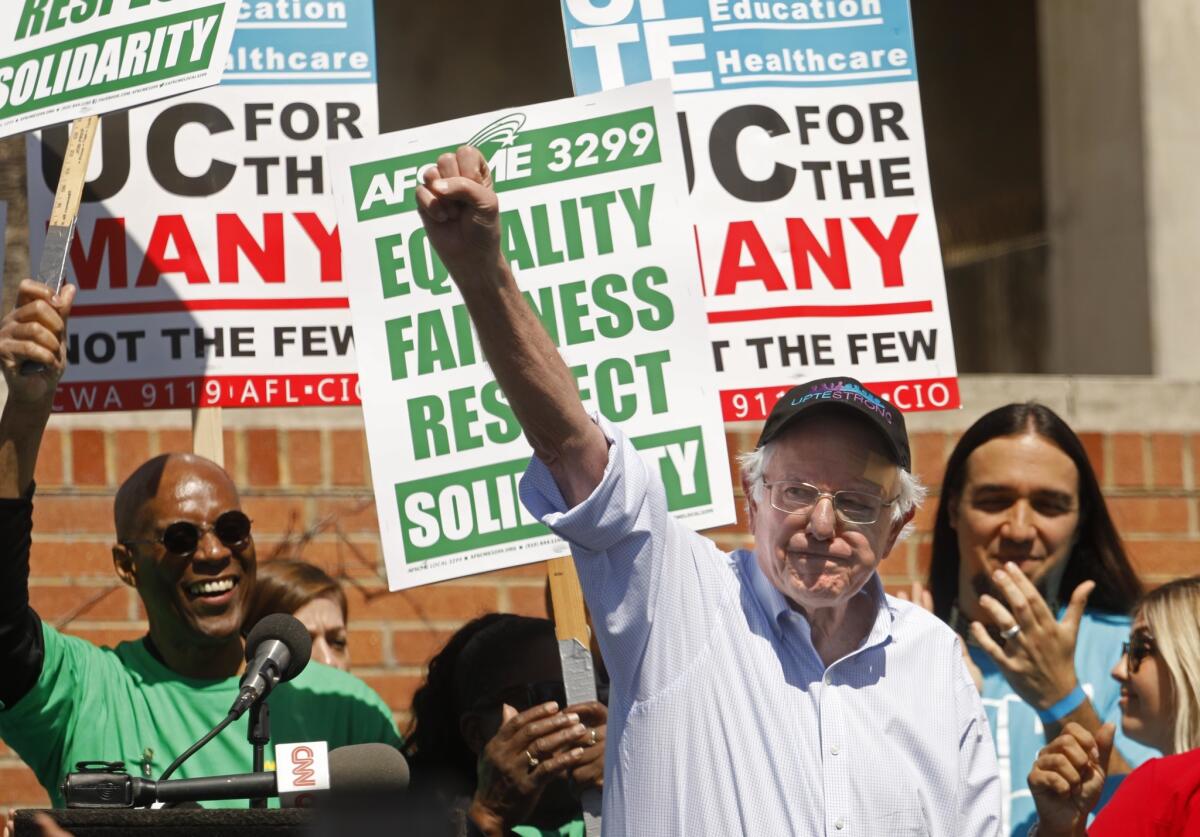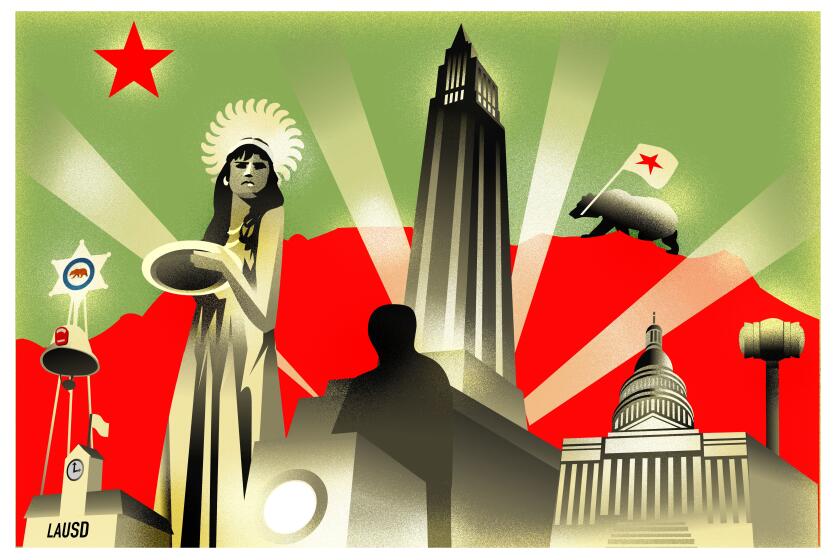What’s behind the rise of Bernie Sanders? Voter concern over economic inequality

- Share via
The rise of Bernie Sanders to front-runner status in the campaign for the Democratic presidential nomination may have scrambled conventional wisdom, but one thing is crystal clear: Along with Sanders, voter concern over the nation’s soaring economic inequality has ascended to top-tier status.
A January poll by the Pew Research Center found that 70% of Americans believe the economy unfairly favors the powerful. And while only 42% say that reducing inequality should be a top priority for the federal government, more than 60% of Democrats — or those who lean Democrat — say tackling inequality should be among the first order of business for Washington.
Inequality is inseparable from Sanders’ political ideology, brand and movement. By tapping into the public’s deep-seated economic anxiety, the Vermont senator has moved from fringe hero of the left to potential standard-bearer of the Democratic Party.
But how can inequality be a driving political force at a time of record-low unemployment, the country’s longest economic expansion and real (though modest) gains in wages? Simply put, the metrics used to gauge the health of the economy — repeated ad nauseam by the media — are giving us only half the story, at best.
One statistic alone offers some insight into why a progressive populist running on inequality is leading the pack: More than 40% of the U.S. population — 135 million people — qualify as poor or low-income.
Los Angeles Times editorial board endorsements for the U.S. House, California ballot measures and more.
All on its own, this staggering number is a sobering indictment of the economic status quo. And many other numbers make a similar point, including the fact that three men (none of them named Bloomberg) have as much wealth as the bottom 50% of Americans combined. Another stark reality: CEO compensation has grown 940% since 1978, while typical worker compensation has risen only 12% during that time.
But what about the current economic boom times touted by President Trump? It turns out neither middle-class nor poor Americans are doing nearly as well as we’ve been told.
New analysis of the latest census data by Capital & Main (a nonprofit news organization where I serve as publisher) and the Economic Policy Institute has found that growth in median household income, adjusted for inflation, fell in 48 of the 50 states during Trump’s first two years in office compared to the last two years of Barack Obama’s presidency. Nationally, median household income grew at a rate of just 2.7% in Trump’s first two years, compared to a 5.8% growth rate in Obama’s last two years.
Many economists agree that the middle class should be doing far better in a labor market with unemployment under 4%.
Among the poorest Americans, average household income growth fell in 36 states during Trump’s first two years in office. In 13 states, the average income in the poorest households actually decreased during Trump’s first two years; the poorest households in only six states saw a similar decline during Obama’s last two years. (The census will release data for 2019 household income in September.)
Once again, low unemployment is not producing the kinds of gains that impoverished households — with an average income of just $14,000 a year — so desperately need.
One critical factor in the less-than-stellar growth of household income is job quality. Yes, low unemployment is an important measure of a healthy economy, but the kinds of jobs we are creating greatly matter. Over the past several decades, the U.S. economy has struggled to generate good jobs, a trend made clear by a job-quality index released in November by Cornell University Law School and a coalition of researchers.
During the Trump economic expansion, the economy has trended toward creating more poor jobs relative to good jobs than it did during the Obama expansion, according to the index.
Sanders has been a relentless critic of what he sees as corporate behavior, often aided by government policy, that drives down wages and benefits for American workers. He is not alone in this critique, of course. Sanders has been credited with moving the Democratic Party and the entire slate of 2020 presidential candidates to adopt more progressive positions on such issues as reining in Wall Street and taxing the rich.
It’s an open question whether Sanders’ call for sweeping economic change will win the day in the Democratic primary, let alone propel him to the Oval Office. But those puzzling over his dominant position in the race to take on Trump this fall would do well to remember that the nation’s record level of inequality — and voters’ worries about it — are squarely on the ballot in 2020.
Danny Feingold is the publisher of Capital & Main, a nonprofit news publication that reports on inequality in America.
More to Read
A cure for the common opinion
Get thought-provoking perspectives with our weekly newsletter.
You may occasionally receive promotional content from the Los Angeles Times.










